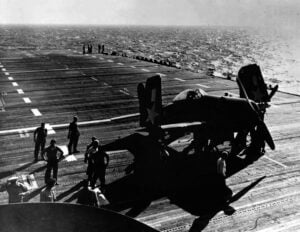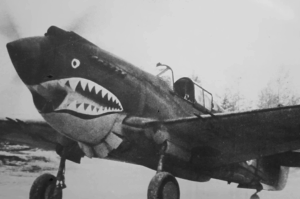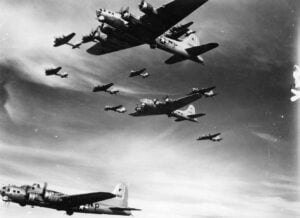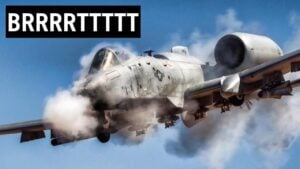How Two B-17s Somehow Piggybacked After a Mid-Air Collision in WWII
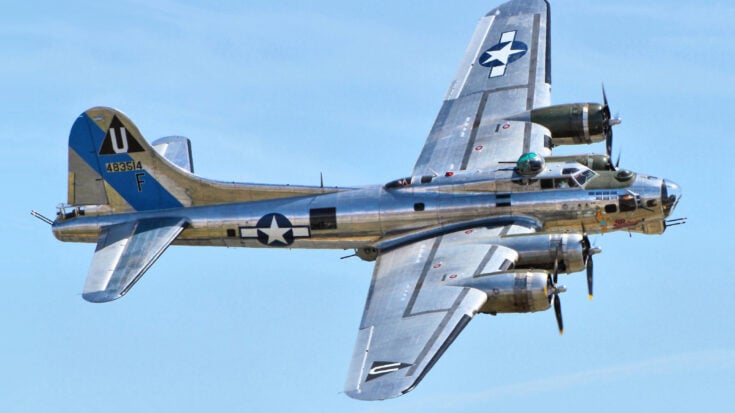
Airwolfhound, CC BY-SA 2.0, via Wikimedia Commons
Approaching the Target
On December 31, 1944, at 19,000 feet above the frozen North Sea, First Lieutenant Glenn Rojan gripped the controls of B-17G Flying Fortress number 4231987, known to its crew as the Little Skipper. Next to him, Second Lieutenant William G. Leak Jr. monitored the instruments as the engines hummed steadily, their familiar thunder cutting through the frigid air. This bomber was part of the 100th Bomb Group, the “Bloody Hundred,” flying toward Hamburg to strike at the industrial arteries that fueled the German war effort. Oil refineries and submarine pens were their targets, sites that shaped the conflict far more than the city itself.
Inside the cramped fuselage, eight men endured the cold and tension. Staff Sergeant Joseph Russo manned the ball turret beneath the plane, rotating twin guns while staring at the earth below. In the nose, Bombardier Sergeant James Shirley prepared the Norden bombsight. Navigator Second Lieutenant Robert Washington plotted their path with precision. The formation closed on the initial point, where the sky would soon turn deadly. Flak appeared first as small puffs, then erupted into dense clouds of black smoke, each one a potential death sentence for any bomber that strayed too close.
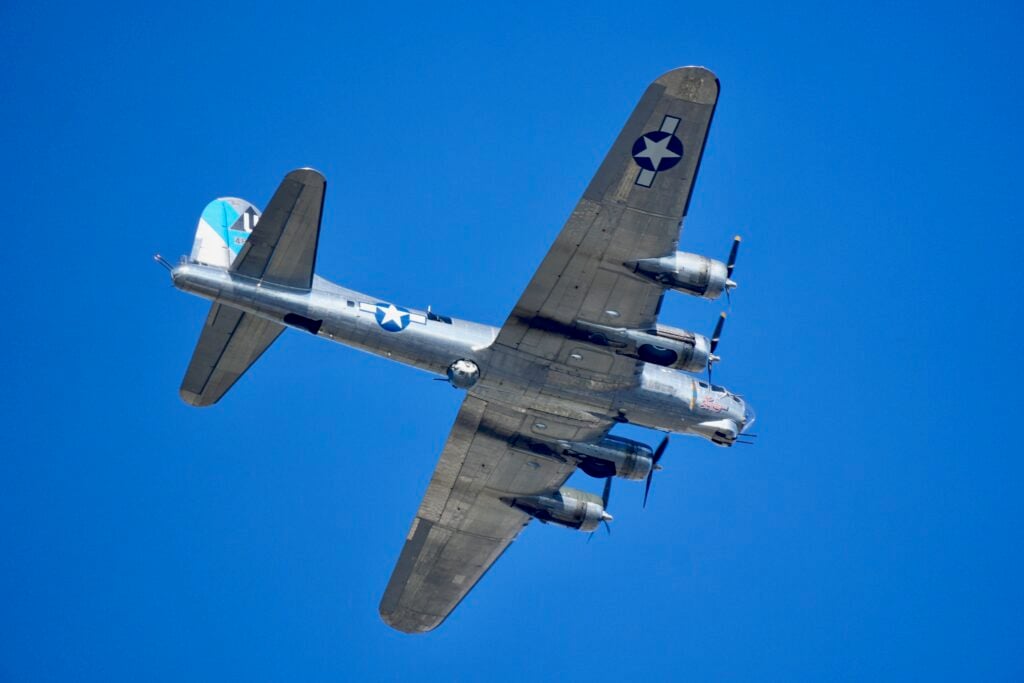
Collision and Chaos
As the bombs were dropped, chaos struck. Lieutenant Floyd Henderson’s B-17, having survived 43 missions unscathed, was hit just behind the cockpit. Its nose dipped violently, and in a matter of seconds, it collided with another bomber, number 4338124. Metal screeched against metal, wings tore, fuel ignited, and eighteen men were killed almost instantly. Amid the destruction, the Little Skipper continued, narrowly avoiding the same fate.
Unknown to Rojan, another bomber, B-17 number 4338457, call sign Nine Lives, had lost an engine and was dropping below the formation. Its pilot, First Lieutenant William McNab, fought to maintain speed and altitude but ultimately lost control. The aircraft began to climb sharply and collided with the underside of the Little Skipper. From Russo’s perspective in the ball turret, it appeared impossible: two B-17s were locked together in mid-air, metal piercing metal, wings intertwined.
The Impossible Piggyback
The Little Skipper shuddered as the collision held, spiraling downward at a frightening rate. Rojan and Leak tried to maintain control, feathering engines and adjusting throttle to stabilize the bomber. Nine Lives, now a ghost ship with no living pilot to guide it, continued to run at full power, dragging the Little Skipper along. The crew attempted to communicate via radio, but static and interference from the formation drowned their calls.
Inside the Little Skipper, the men prepared for the worst. Orders to bail out were given as the aircraft descended to 16,000 feet. Staff Sergeant Roy Little and Tail Gunner Francis Chase were among the first to leave, tumbling away as parachutes opened into the gray sky. In the cockpit, Rojan made a hard choice to stay with the plane, keeping it as steady as possible to buy time for the remaining crew. Leak stayed at his side, supporting the effort to maintain control while the two bombers remained fused in a seemingly impossible formation.

Crash and Survival
The collision finally ended when Nine Lives struck the ground, exploding in a rolling fireball. For a moment, the Little Skipper was freed, riding the blast and superheated air before gravity reclaimed it. The aircraft slammed nose-first into the ground, bouncing and tearing across German soil. Left and right wings struck trees, buildings, and the earth itself, gouging trenches and sending debris flying. Finally, the plane came to rest upside down, a twisted maze of metal and shattered glass.
Rojan and Leak survived, bloodied and battered. Crew members emerged from the wreckage with injuries, some severe, but alive. Around them, German soldiers approached, rifles raised, surveying the unbelievable sight of two B-17s reduced to smoking craters yet still revealing four Americans who had survived a collision almost beyond comprehension. Rojan caught a final glimpse of the burning Nine Lives and thought of McNab, the pilot who had gone with the aircraft. Then darkness claimed him.













